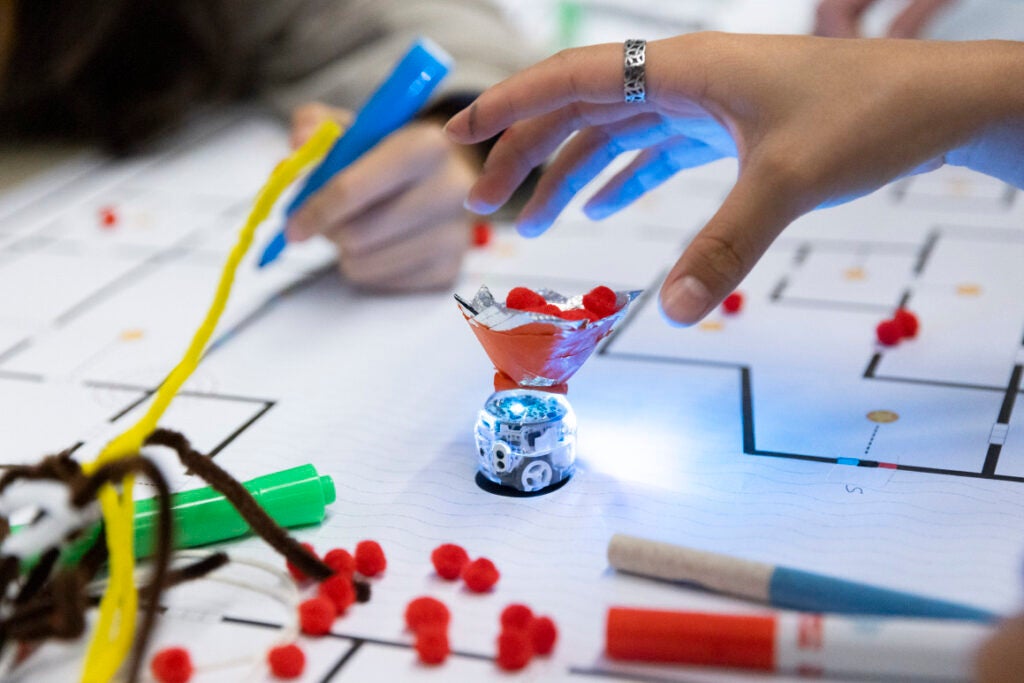Science, Technology, Engineering, and Math Pathways
Science, Technology, Engineering, and Math Career Pathways
Is this the right pathway for me?
- Do you enjoy solving problems and exploring how things work?
- Are you interested in learning about and applying scientific principles and technology?
- Do you have a passion for innovation and a desire to make a positive impact on the world?
What is a STEM Pathway?
Students eager to be at the vanguard of 21st-century technology innovation and problem-solving will find plenty to keep them captivated in the Science, Technology, Engineering, and Mathematics (STEM) Career Cluster.
The Engineering and Math pathway focuses on planning, managing, and providing scientific research and professional and technical services, including laboratory and testing services, and research and development services. Those who choose careers in this pathway apply essential math and science content and skills in a real-world context.
What sort of work would I do?
STEM (Science, Technology, Engineering, and Mathematics) offers a wide array of exciting and diverse career opportunities. In science, you can become a biologist, chemist, or physicist, exploring the mysteries of the natural world. Technology careers include roles like software developer, data scientist, and cybersecurity analyst, focusing on innovation and problem-solving. Engineering opens doors to professions such as civil engineer, electrical engineer, or aerospace engineer, involving the design and creation of structures and systems. Mathematics leads to careers like mathematician, statistician, or actuary, where analytical skills are applied to solve complex problems. STEM fields are dynamic and offer a pathway to contribute to advancements in various industries, from healthcare and environmental science to information technology and beyond.
Leads to these Careers
- Environmental Scientist
- Aerospace Engineer
- Civil Engineer
- UX/UI Designer
- Robotics Engineer
- Statistician
- Geoscientist
- Data Scientist
In-Demand Occupations
| Typical Education Required | Career Title | Average Annual Salary | Job Outlook in WA State (2020-2030) |
| Associate’s Degree (or Certificate) | Civil Engineering Technologist | $74,383 | 7% increase |
| Bachelor’s Degree | Architectural and Engineering Manager | $159,536 | 8% increase |
| Master’s Degree | Statistician | $109,300 | 35% increase |
What Courses can I take now?
Check with your school counselor and administrators to find out which classes are available at your school.
Clubs and Activities at SPS
Interested in learning more about STEM and Robotics careers? SPS students have the opportunity to deepen and expand their knowledge alongside their peers and teachers with Technology Student Association (TSA). TSA and equivalent clubs host competitive events, provide leadership opportunities, and helps student prepare for career and college. Find a chapter at your school here!
What training do I need after high school?
Aerospace Engineer
- Programs: Bachelor of Science in Aeronautical and Astronautical Engineering at Boeing Department of Aeronautics and Astronautics at University of Washington
- Focus: Design and testing of aircraft and spacecraft
- Opportunities: Internships at aerospace companies and NASA programs
Robotics Engineer
- Programs: Bachelor’s in Robotics Engineering or Mechatronics. Explore the program at California Institute of Technology, one of the top robotics programs in the country. Learn more about this growing field.
- Skills: Programming, mechanical design, AI fundamentals
- Extracurriculars: Robotics clubs, competitions like FIRST Robotics
Statistician
- Pathways: Bachelor’s in Statistics or Applied Mathematics — get started at Seattle Central, South Seattle or North Seattle College. Learn more about math transfer degrees by clicking the preceding links.
- Skills: Data analysis, probability theory, software proficiency
- Opportunities: Internships in research institutes, government agencies
Explore the right fit post-secondary pathway for you using the SuperMatch college feature on Naviance!
Questions or concerns? Contact content area specialist John Parker at cte@seattleschools.org


